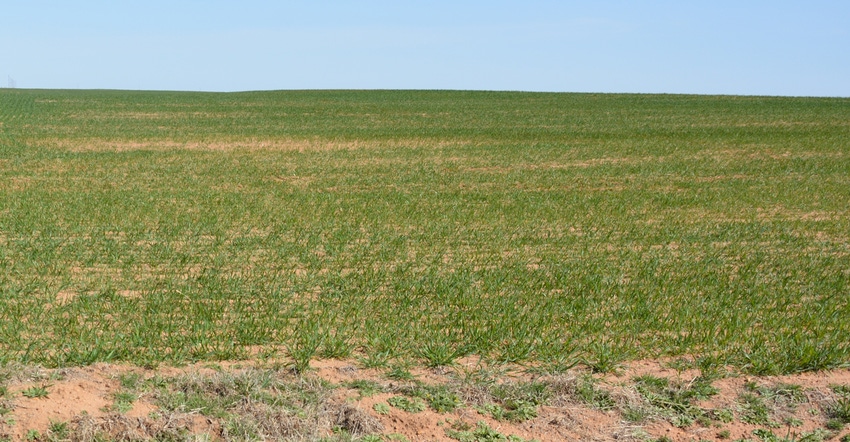
The Kansas wheat crop was only 13% jointing at the end of the first week of April — well behind the five-year average of 35% and last year’s 41% at the same time.
Considering recent weather, that’s probably a really good thing. The first week of April not only brought the season’s first snowfall to much of Kansas, but some of the coldest weather of the year as well, with nighttime lows falling into the teens and daytime highs barely above freezing.
Having only a small fraction of the crop as far along as jointing means less chance of massive freeze damage as a result of those adverse events. Not that the Kansas winter wheat crop needs another challenge. The late planting for much of the crop, combined with one of the driest winters on record — much of the state got virtually no moisture from early October to mid-March — have already taken a toll on harvest prospects.
The Kansas Agricultural Statistics Service found only 13% of the crop in good or excellent condition (just 1% excellent) in the first week of April Crop Progress report. A whopping 74% of the crop is considered fair to poor, and 13% is considered very poor.
That’s not to say there’s no hope for the crop, which has been known to have more lives than a lucky cat. Rains that came in mid-March were just in time as the crop broke dormancy and began to use available moisture.
The early April snow arrived to provide a blanket over the crop for the worst of the severe cold. It also allowed more moisture to sink into the soil and keep the crop growing when warmer weather arrived. Those combined events provide hope to the farmers with those excellent, good or even fair fields. Crop condition has been known to improve dramatically in late April and May. With continued timely rain and moderate temperatures over the next several weeks, Kansas could still have an average or close-to-average crop in many areas.
About the Author(s)
You May Also Like




